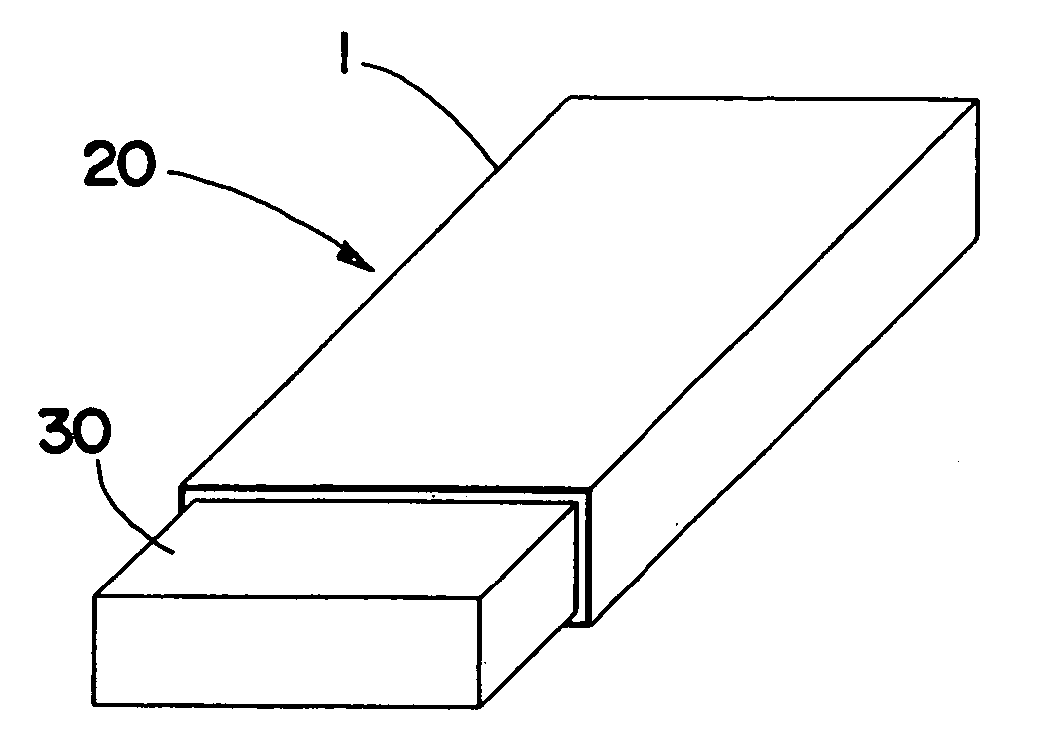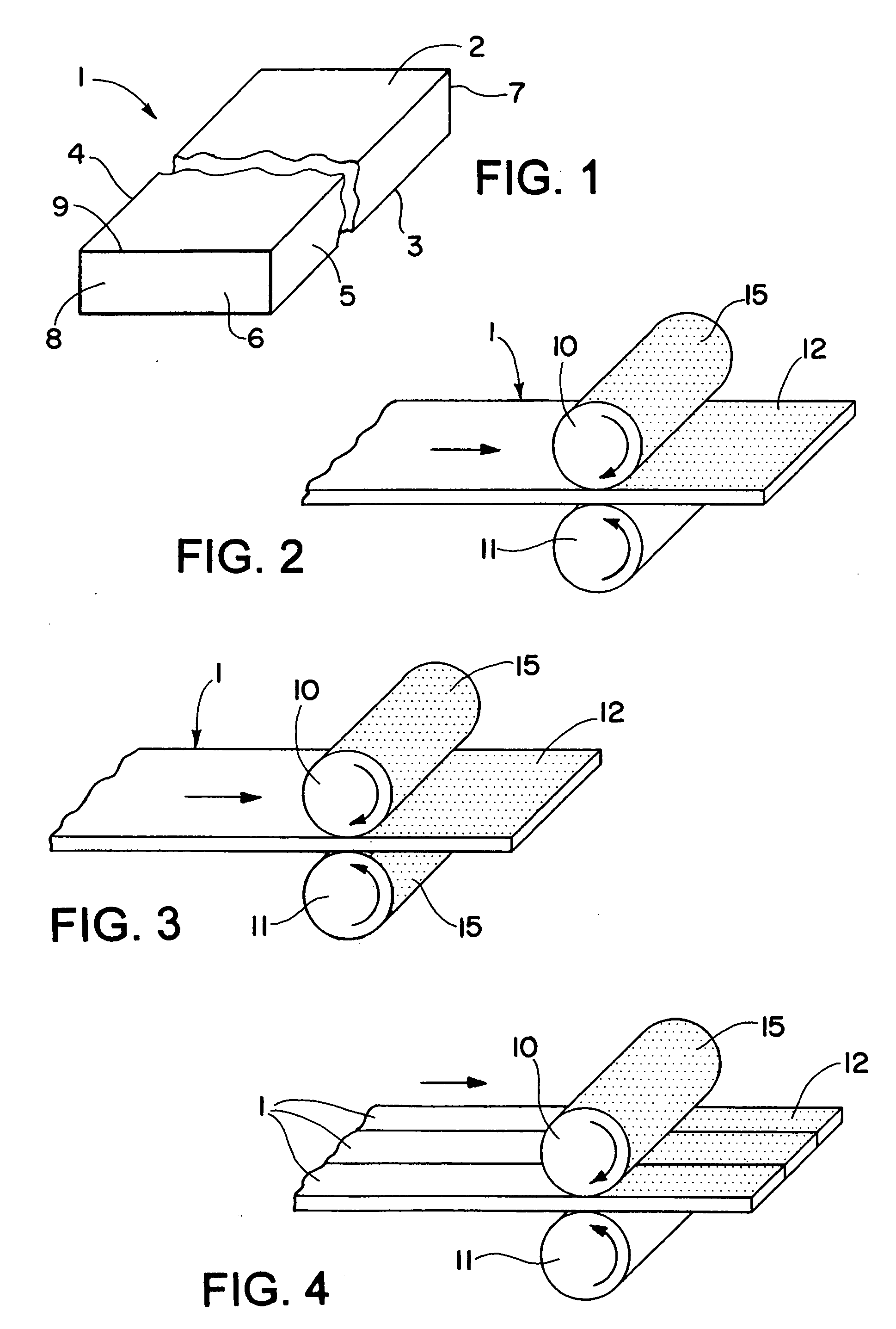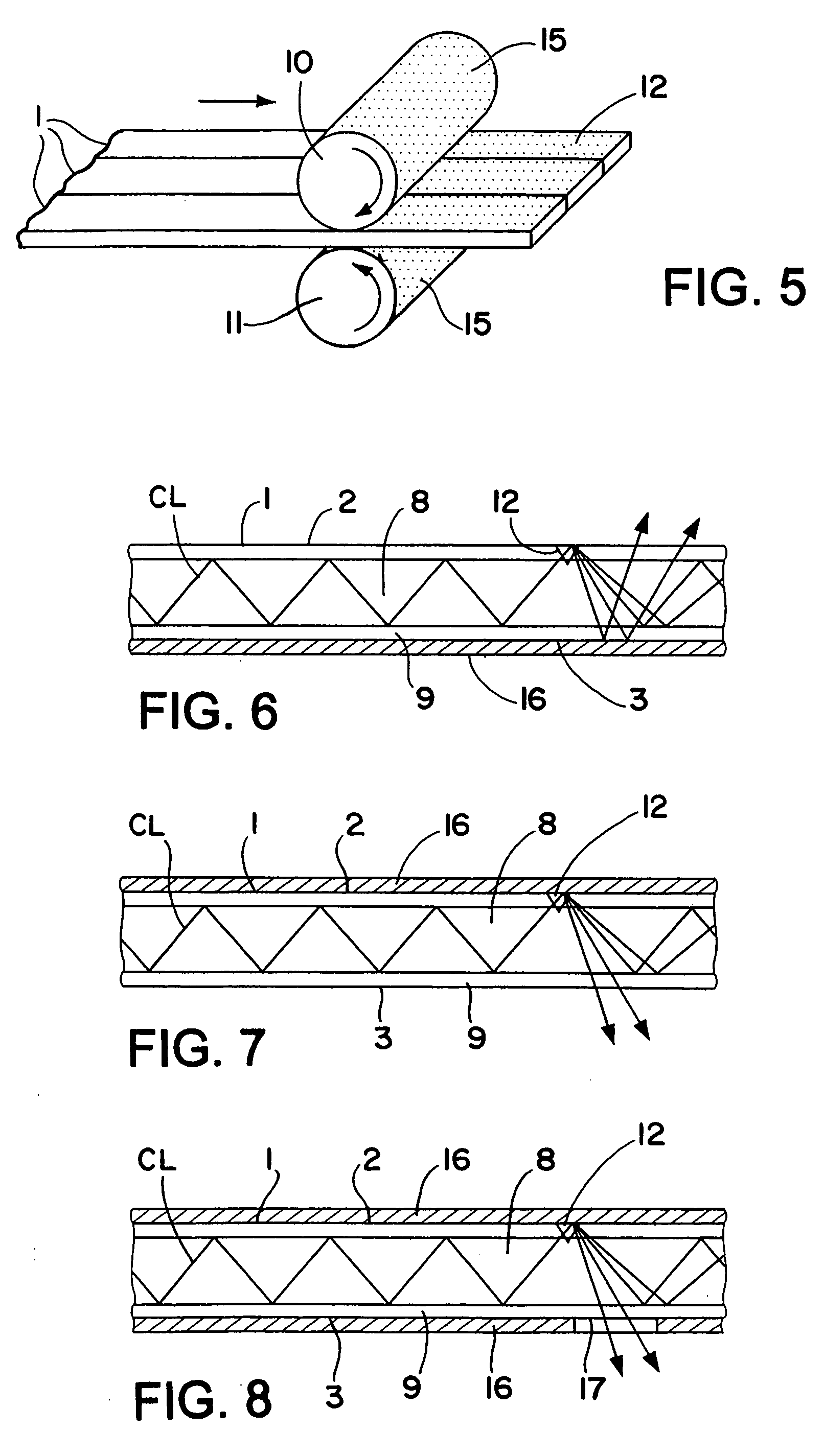Flat optical fiber light emitters
a technology of optical fibers and light emitters, which is applied in the field of flat optical fiber light emitters, can solve the problems of difficult control of the thickness of injection molded light emitting panels, films, sheets and plates, and the relatively high cost of manufacture of light emitting members out of optical fibers, and achieves the effects of increasing efficiency, reducing manufacturing costs, and reducing manufacturing costs
- Summary
- Abstract
- Description
- Claims
- Application Information
AI Technical Summary
Benefits of technology
Problems solved by technology
Method used
Image
Examples
Embodiment Construction
[0042] Referring now in detail to the drawings, wherein the same reference numbers are used to designate like parts, and initially to FIG. 1, there is shown a flat optical fiber 1 of any desired length having opposite flat sides 2 and 3 and opposite side edges 4 and 5 and ends 6 and 7. The flat optical fiber 1 has a light transmitting core portion 8 made of a suitable optically transparent material such as glass or plastic having the desired optical characteristics and flexibility. Surrounding the core portion 8 is an outer sheath or cladding 9 having an index of refraction that is different than that of the core material, whereby substantially total internal reflection is obtained at the core-cladding interface, as well known in the art.
[0043] To cause conducted light entering one or both ends of one or more flat optical fibers 1 to be emitted from one or both sides 2 and 3 thereof, the flat optical fibers may be disrupted at one or more areas along their length as by roughening, ...
PUM
| Property | Measurement | Unit |
|---|---|---|
| thickness | aaaaa | aaaaa |
| width | aaaaa | aaaaa |
| width | aaaaa | aaaaa |
Abstract
Description
Claims
Application Information
 Login to View More
Login to View More - R&D
- Intellectual Property
- Life Sciences
- Materials
- Tech Scout
- Unparalleled Data Quality
- Higher Quality Content
- 60% Fewer Hallucinations
Browse by: Latest US Patents, China's latest patents, Technical Efficacy Thesaurus, Application Domain, Technology Topic, Popular Technical Reports.
© 2025 PatSnap. All rights reserved.Legal|Privacy policy|Modern Slavery Act Transparency Statement|Sitemap|About US| Contact US: help@patsnap.com



